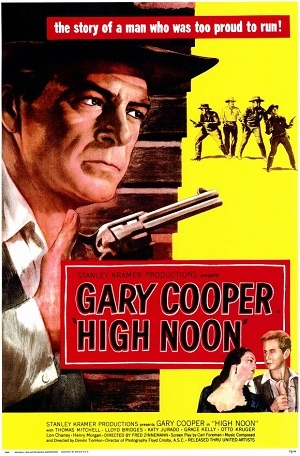Film noir comes to the suburbs!
The Killer is Loose opens with the robbery of a savings and loan. At first, it seems like meek bank teller Leon Poole (Wendell Corey) behaved heroically and kept the robbery from being far worse than it could have been. How meek is Leon Poole? He’s so meek that his nickname has always been Foggy. People have always made fun of him because of his glasses and his bad eyesight. Everyone assumes that Poole is just one of those quiet people who is destined to spend his entire life in obscurity.
However, the police soon discover that Leon Poole is not the hero that everyone thinks that he is. Instead, he was involved in the robbery! When Detective Sam Wagner (Joseph Cotten) leads a group of cops over to Poole’s house to arrest the bank teller, Poole’s wife is accidentally shot and killed. At the subsequent trial, Poole swears that he’ll get vengeance. And then he’s promptly sent off to prison.
Jump forward three years. Leon Poole is still in prison. He’s still deceptively meek. He still wears glasses. Everyone still assumes that he’s harmless. Of course, that’s what Poole wants them to believe. He’s still obsessed with getting his vengeance. Meanwhile, Detective Wagner and his wife, Lila (Rhonda Fleming), are living in the suburbs and have a somewhat strained marriage. Lila wants Wagner to find a less dangerous and less stressful job. Wagner wants to keep busting crooks.
When Poole see a chance to escape from prison, he does so. That’s not really a shock because even the quietest of people are probably going to take advantage of the chance to escape from prison. What is a shock is that Poole ruthlessly murders a guard while making his escape. He then kills a truck driver and steal the vehicle. He then tracks down his old army sergeant and guns him down while the man’s wife watches. Always watch out for the quiet ones, as they say.
Now, Poole has just one more target. He wants to finish his revenge by killing Lila Wagner.
The Killer is Loose is a tough and, considering the time that it was made, brutal film noir. (Seriously, the scene where Poole kills his former sergeant really took me by surprise.) While both Rhonda Fleming and Joseph Cotten give good performances in their roles, it’s Wendell Corey who really steals the film. Corey plays Poole not as an outright villain but instead as a man who has been driven mad by years and years of taunts. After spend his entire life being told that he was a loser, Poole finally decided to do something for himself and, as a result, his wife ended up getting killed by the police. Now that Poole’s managed to escape from prison, he’s willing to do anything just as long as he can get his final revenge. Corey plays Poole with a smoldering resentment and the performance feels very real. (If the film were made today, it’s easy to imagine that Poole would be an anonymous twitter troll, going through life with a smile on his face while unleashing his anger online.) It brings a very real spark and feeling of danger to a film that would otherwise just be a standard crime film.
The Killer Is Loose also makes good use of its suburban setting, suggesting that both Fleming and Cotten have allowed themselves to get complacent with their life away from the obvious dangers of the big city. You can buy a new house, the film seems to be saying, but you can’t escape the past.



